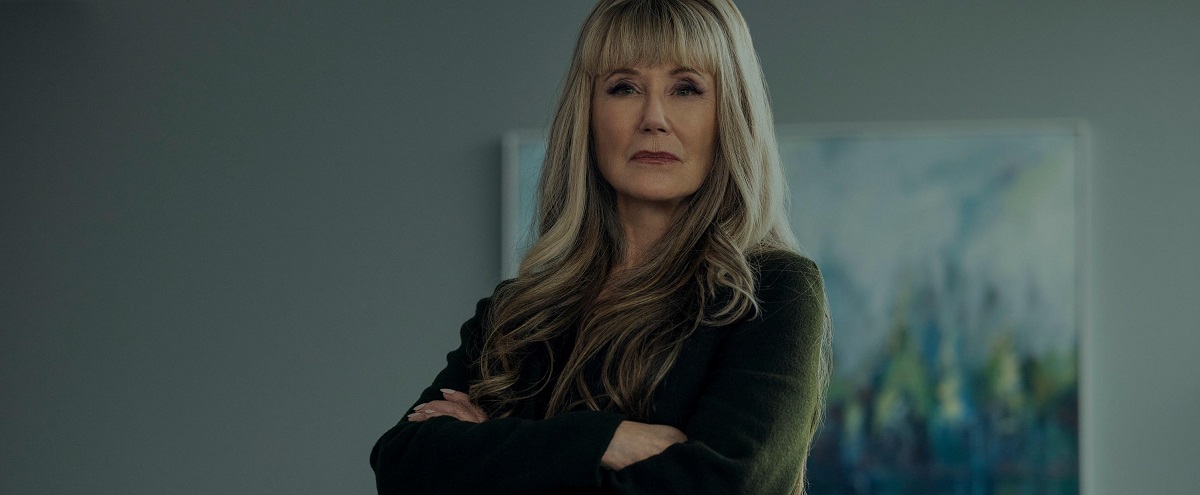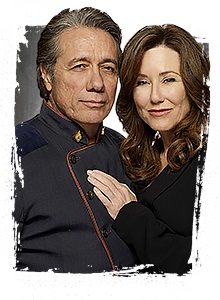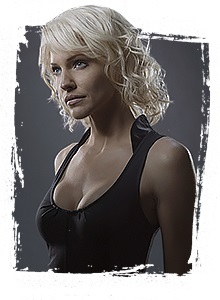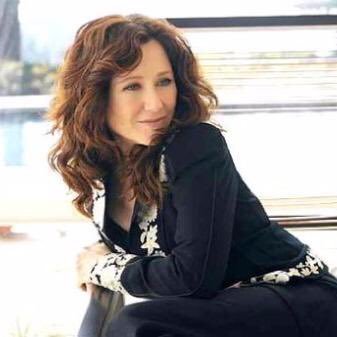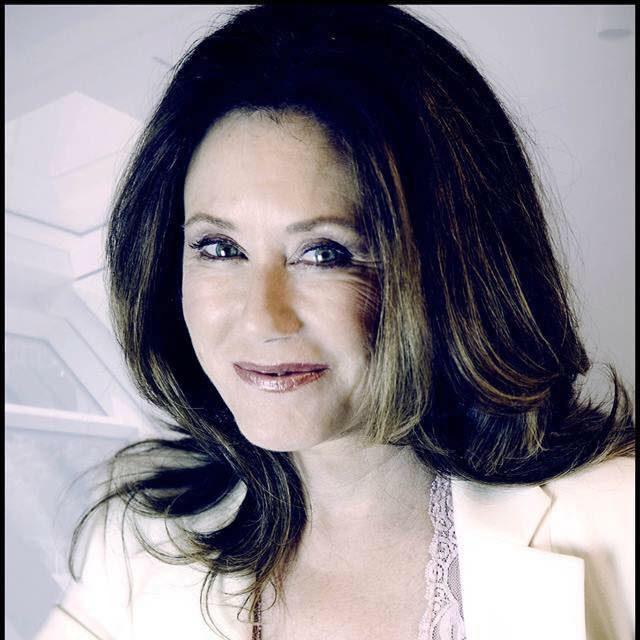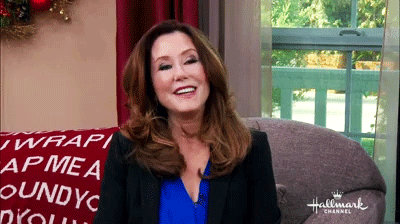
Mary McDonnell on Battlestar Galactica and going mute in front of Robert Redford
Will Harris
November 25, 2013
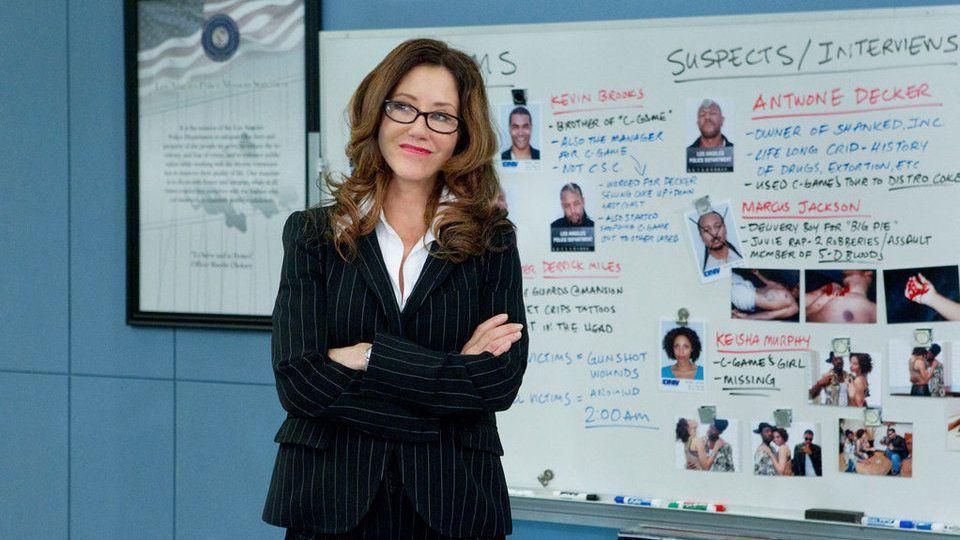
Welcome to Random Roles, wherein we talk to actors about the characters who defined their careers. The catch: They don’t know beforehand what roles we’ll ask them to talk about.
The actor: Mary McDonnell got her start in the theater, earning acclaim for her stage performances before ever stepping in front of the camera. Although her first on-camera role may have been on As The World Turns, it wasn’t long before she was being nominated for Oscars for Dances With Wolves and Passion Fish, enduring an alien invasion in Independence Day, and—after returning to the small screen—batting Cylons on Battlestar Galactica. Currently, McDonnell can be seen playing Captain Sharon Raydor on TNT’s Major Crimes.
The Closer (2009-2012) / Major Crimes (2012-present)—“Captain Sharon Raydor”
Mary McDonnell: Captain Sharon Raydor came to me through James Duff, the creator of The Closer, and the task at hand was to do a three-episode arc, bringing in an antagonist to give Brenda Leigh Johnson someone to tangle with. And little did I know the surprising future that was in the making. Little did any of us know. [Laughs.] So it’s a really great, fun job where I got to come in and push people around, and I thought, “Oh, that’ll be fun. I don’t do that very often.” Honestly, before I could really say “boo,” it grew into other things. And never in a million years did I expect it would end up journeying into a complete dance from antagonist to protagonist, to a new show and all of this. I will say that, if there’s a word to describe it, it’s “surprising.” It’s continually surprising playing Captain Sharon Raydor.
The A.V. Club: What was the process of transitioning you from The Closer toMajor Crimes? When did they pitch you the idea?
MM: Somewhere in the second season of when I was doing The Closer. The first time I did three episodes, the next season I think I did five or seven, and somewhere toward the end of that, I think the spin-off started to be “in the air,” as they say. And then the way we went about it was, I came on the last season of The Closer as a regular to give us the platform through which to spin it off.
AVC: Was a full-time series role something you’d been interested in taking on? Certainly you’d done it before, but—
MM: I like hour dramas. I like the format, I like the lifestyle, I like creating at the character’s edge episode by episode and discovering. I love the discovery process, and I like working fast. So having finished Battlestar and taken a break, I was kind of interested. I was interested in developing something, actually. That’s what I was working on, developing another piece that would move into that format, when this all happened. And one thing I’ve learned as an actress over 30 years is that when it’s happening, go with it. [Laughs.] It’s really worked for me!
AVC: So how did Captain Raydor evolve after you transitioned onto Major Crimes? Certainly the writers fleshed her out a bit more.
MM: Oh, yeah, she’s continually evolving. I mean, one of the main ways in which we started to see more of her was vis-à-vis the young boy, the character of Rusty, who ended up living with her. That allowed us to see Sharon’s personal life and allowed us to understand that she’s been a mother for many years and has all kinds of energies in the maternal arena that she doesn’t necessarily expose at work or utilize. It started to expand primarily that way; that knowledge or that awareness of her—or her awareness of herself that way—sort of became more integrated into her work as a cop, and then things started feeding each other. And now we’re almost finished with the second season, and I’ve got to say, I think she’s a really good cop. That was always there to be discovered, but I think it has been discovered this season.
As The World Turns (1980)—“Claudia Colfax”
MM: Oh, my God! Okay, here it is: I’m going to try to do word association. I’m standing in front of a wall, a piece of a wall, with a pay phone on every episode I played, putting a dime or a quarter or something into the phone and calling the character who was the lead in the show about her baby, who I was secretly raising. But I had a boyfriend who was beating me up, so I was always in tears or, like, bruised. That’s what I remember. The other thing I remember about it was being jubilant, because I was making money, and I could actually take my boyfriend at the time out to dinner. [Laughs.]
AVC: Being that was your first on-camera role, how did you find your way onto the show?
MM: I took a class in on-camera acting… and believe me, it took me a long time to get there, because I was not a really successful acting-class girl. Not until I found the right teacher. So I would go running from acting classes after the second session. When a friend of mine tried to get me to take an on-camera class, that to me was just the worst thing. But, anyway, I did it, and the teacher was a terrific guy, still is, and he was a casting director for As The World Turns. So he recognized that I had something going on there. First he got me a day-player job for a couple of days, and then he got me the audition for this guest-star role. And that’s how it happened!
AVC: To flash back even further, what made you decide to pursue acting as a career in the first place?
MM: When I was a freshman in college and I really didn’t have any aspirations, I didn’t know what I wanted or who I was or anything else, I accidentally—through good fortune—was compelled to introduce myself to a girl in my dormitory because it was so long ago that they used to treat women’s dorms like sororities, and they were making the freshmen roll toilet paper across the floor with their noses. Of course, some part of me just didn’t want to do that! [Laughs.] I didn’t know that part of me very well yet, but I saw this girl sitting across the room, and she had her leg up in a cast, her hair in a bandana, and she was smoking a cigarette. She was very happy that she didn’t have to roll toilet paper. And I went, “I want to be her friend!” I walked across the room and sat down, introduced myself, she was already a declared theater major. I started hanging out with her in the prop shop, building props. From there, my dad said, “Well, why don’t you take an Intro To Theater class as an elective next semester?” And from there, they said in my class, “Why don’t you audition for a part in The Crucible?” I got a part, and from there, I never looked back.
AVC: You worked in theater for a while before taking that class in on-camera acting. How difficult was the transition from theater to in front of the camera for you? Was it something that you’d hoped to do at some point, or were you quite happy just doing theater?
MM: I was very happy in theater, but I was very open to making a living that was a little bit more substantial. [Laughs.] There was a part of me that had a lot to learn in front of a camera because, of course, it is different. I honestly think it is, and the difference lies in this: Somebody explained to me once that the reason they call it a “take” when you’re shooting camera work is that the camera’s job is to come in and take the present moment from the actor into the camera. The actor’s job is to be present, so that the camera can come in and take it. In the theater, the actor’s job is to project the present to the back row for the lady who’s blind and deaf. Do you know what I’m saying? It’s a different exercise. And learning how to trust the present moment was the job for me. You don’t do anything with your talent or what it is to be an actor, but you do have to begin to trust being present with your expression, as opposed to projecting it into a bigger space.
High Society (1995-1996)—“Dorothy ‘Dott’ Emerson”
MM: Oh, my God, so much fun! The most ridiculously great clothes. Ridiculouslygreat clothes! Jean Smart is one of the funniest women on the planet. Even when we weren’t doing what we were supposed to be doing, we made each other laugh. The writers were fun. It was so much fun. Really, there’s a couple of things in my life that didn’t work out the way I thought or hoped they would have. I think that show, had it been given just a little bit more time, would’ve turned, broken through the glass, and stayed there for awhile. And that’s too bad that it didn’t. But it was, honestly, one of my favorite little gigs.
AVC: Do you think it suffered because people immediately spotted theAbsolutely Fabulous comparisons?
MM: No! I think there’s no hiding that! [Laughs.] The only reason it got put on CBS was because Ab Fab had already happened, and we understood that we could—globally—really have a good time following these zany contemporary women.
E/R (1984-1985)—“Dr. Eve Sheridan”
ER (2001-2002)—“Eleanor Carter”
AVC: You have the relatively rare distinction of having appeared on twoshows called ER.
MM: [Laughs.] Yeah!
AVC: Well, let’s work chronologically and talk about the sitcom first.
MM: Dr. Eve Sheridan came to me when I was doing a production of Three Sistersin Minneapolis, at the Guthrie Theater. I had auditioned for the pilot, and when we talked about what the dates entailed, I said to the writers, who had been there in the room, “Oh, my gosh, this is going to be a problem! I’m leaving tomorrow to do Three Sisters at the Guthrie!” And they started to laugh. They said, “Are you telling us you’d do a play instead of a pilot?” And I said, “No! I’ve just… I’ve never backed out of a play in my life!” And I was so honest that they got a kick out of me, and I think that was memorable to them. Lo and behold, they went and did the pilot without me, and for whatever reason the character didn’t work out, so they said, “Let’s go see if that gal is finished with her play!” [Laughs.] And they called me in Minneapolis. I had to leave a week early, but thank God I didn’t have any problem leaving a week early. So I went out and started shooting it, and, of course, you know I got to work with George Clooney, who also is a veteran of twoERs!
AVC: It’s an elite group.
MM: It really is! But, you know, the more years I spend in this business, the closer it gets. I would say that at least 60 percent of the episodes I did of Major Crimesthis year, I worked with the guest star or one of the guest stars in a play somewhere in the early part of my career. Including Tom Berenger!
AVC: How was the experience of doing the dramatic ER?
MM: The dramatic ER was fantastic. It was such an interesting character, one that was very short-lived but was very powerful nonetheless. And I do love Noah Wyle, so it was very easy to step into playing his mother and understanding him as that entity. It was quite wonderful. I loved it.
Tiger Warsaw (1988)—“Paula Warsaw”
MM: Okay, what I remember from Tiger Warsaw was experiencing fully the wonderful entity that was Patrick Swayze. He was such a good guy. He was sogifted, and he was so funny and… he was such a renegade in so many ways. If something was going wrong on the set, or if actors weren’t being treated well, or something else, you didn’t have to do a thing. Patrick took care of everything. He was really, really, really a beautiful soul. I feel very lucky, because it’s just so sad that he’s gone. I just feel lucky that somewhere in my career I got to experience him.
AVC: You also got to work with Piper Laurie on that film as well.
MM: Oh, yes! And I think I worked with her again… although I can’t remember where! [Laughs.] But she’s just an amazing performer.
Blue Chips (1994)—“Jenny Bell”
MM: Well, there’s so many memories from that, but the one that always pops into my mind right away is standing on two or three apple boxes to be tall enough to work with Shaq. [Laughs.] I was playing his teacher, and it would’ve been so silly if he’d had to bend over that far to be at eye level with me. It would just look so hideous, talking up to him four feet. So they put me on all these apple boxes, and then someone would hold my hand so I wouldn’t fall off. The whole thing was great fun, though. And Nick Nolte is also a really gifted person, so it was great working with him, and, of course, Billy Friedkin is a brilliant director. I’ve gotten to work with him twice in my career, and I’m grateful.
AVC: How was Shaq as an actor? That was his first time taking a stab at it.
MM: He was delightful, actually. He has a little performer in him, as we all know, and he availed himself to the job very sincerely, very openly. He’s got good instincts. So I found him delightful.
Mrs. Harris (2005)—“Vivian Schulte”
MM: [Bursts out laughing.] Great costumes. And I got to work with Annette for the first time, even though we’d known each other for years. Annette Bening and I met when we were both nominated for Oscars the year of Dances With Wolves. For her it was The Grifters. And the reason we got to know each other at all is that when Whoopi Goldberg won… Okay, I’m going to go back for a little bit:
At the nominees’ luncheon, where everyone’s a winner… [Laughs.] before most of us became losers! But all the Best Supporting Actress nominees got together: Diane Ladd, Whoopi Goldberg, Annette, me, and Lorraine Bracco, who’s now onRizzoli & Isles. She plays Rizzoli’s mom. Anyway, we’re all standing there, and Diane Ladd says, “I think whatever b—- wins this thing ought to bring the other b—-es out to lunch.” [For the record, we did not edit Ms. McDonnell. She actuallysaid, “B-blank-blank-blank-blank.” —Ed.] And we kind of shook on it. Of course, Whoopi won, and the day after the Oscars, we all got these huge bouquets with an invitation to lunch. So we all went to lunch, and that’s how I got to know Annette. And it’s been wonderful to know her a little bit, and then years and years later, we finally got to work together.
So my experience on Mrs. Harris was that, but it was also getting used to… [Long pause.] Um, I’m not going to be able to complete that one. It’s bad. [Laughs.] So… never mind! I got halfway down that road and went, “Nope! Not going there!”
AVC: Oh, man! What a tease!
MM: I know! [Laughs.] Sorry!
Scream 4 (2011)—“Kate Roberts”
MM: I think the main thing I took away from that was learning—and I don’t think I’d ever learned this before, and I’ve been at this for a long time, something really new was kind of exciting—the choreography of tension from the director. It was, like, watching him set us up to build the tension in this horror flick was a fascinating science. And I really appreciated it.
Donnie Darko (2001)—“Rose Darko”
MM: One of my favorite experiences, without a doubt. Donnie Darko was a film script that I read and, for some not-to-ever-be-explained-reason, I understood it. [Laughs.] In the first read! I gave up my summer vacation to do this independent film for no money, and we were all sort of in that mode. I got my first speeding ticket driving down the Pacific Coast Highway to get onto the 10 and the 405 South to get down to Long Beach by, like, 6 a.m. People loved doing Donnie Darko. It didn’t matter the circumstances. And I loved working for Drew Barrymore and Nancy Juvonen as producers. They are brilliant and delightful and wonderful. I loved working with Jake [Gyllenhaal], and… it was kind of a marvelous step through the thing that we call reality into this other area that I actually personally believe is there. It was really, really fun to transition in and out of that world.
Margin Call (2011)—“Mary Rogers”
MM: The shortest, sweetest job I’ve ever had. I was there for one night! [Laughs.] I flew in to New York, stayed at a great hotel, got picked up in the morning, we drove up the Hudson to this beautiful house, and by that night we were shooting it. And I got to be with Kevin [Spacey], and I hadn’t worked with Kevin since we did the play National Anthem, which Kevin, Tom Berenger, and I did at the Long Wharf in the ’80s. I don’t think Kevin and I had worked together since then. We’d seen each other here and there. I can’t tell you how easy it was for us to fall into an implied history. They’re all wonderful people, the creators and writers ofMargin Call. I know [J.C. Chandor] has this new film with [Robert] Redford that’s just come out [All Is Lost]. I haven’t seen it yet, but I can’t wait. I was supposed to go to the premiere, but my work schedule changed so I couldn’t. I’m already looking forward to my hiatus, so I can catch up on movies!
Independence Day (1996)—“First Lady Marilyn Whitmore”
MM: First Lady Marilyn Whitmore! I was just talking about her yesterday, because we were shooting downtown, and when my driver was taking me home, I looked up and I saw the U.S. Bank building… and suddenly the whole moment inIndependence Day came flooding back where Marilyn Whitmore is on the roof of one of the buildings in L.A. and gets into the helicopter, and then she looks over at the roof of another building, where all these Los Angelinos are dancing and asking the aliens to take them. [Laughs.] It was a blast!
I was really surprised, though, because when I read the script, I think I was working on something else at the time, so I had to read it pretty quickly, and… I hadn’t really done a lot of action movies before, so I didn’t really know how to read the special-effects paragraphs. So I kind of skipped over them and I looked through the story, looked for the characters and the usual things I look for, and I said, “Oh, I’d love to play this! This will be wonderful! This is going to be quite a wonderful movie!” When I went to the premiere and saw them blow up the White House, I was absolutely astonished! I was, like, “Oh, my God! Look at the movie I agreed to!” [Laughs.] But in the long run, it was really a fun, marvelous thing. I loved it.
AVC: Sadly, your character will not be readily available for the sequel.
MM: Well, there’s always a flashback! [Laughs.] Come on! Why not? I’ve been saying it to everyone who asks me: “Please tell them that the fans demand a flashback of Marilyn Whitmore!”
Matewan (1987)—“Elma Radnor”
Passion Fish (1992)—“May-Alice Culhane”
MM: Matewan was my first film, and John Sayles is such a masterful filmmaker. He’s so prepared, because he writes and directs the films, he edits the films, and he produces his own films. When you work with John, it’s super efficient, in that he knows exactly what he’s going after, so he casts accordingly. And you will sometimes shoot your close-up first, because he knows what he needs, and then if he needs a master, he’ll back up and do it, but, you know, he’ll move on without doing that because he knows he doesn’t need it. So I kind of learned how to be an actress in a film through John Sayles, and I naïvely thought that they would all be like that. [Laughs.]
When I went back to do Passion Fish with him, one of the things I was so excited about was his all-encompassing knowledge of each and every character, and what a gift that is to an actor, to be in the hands of someone who has in his imagination truly lived through the experience of each one. I just love John Sayles. I think he’s one of our greats, and I think he’s an amazing human being. I had two profound experiences with him. Being on the bayou in Louisiana, playing an embittered soap-opera actress in a wheelchair, with mosquito netting between takes at night, doesn’t sound like it’d be a whole lot of fun. But it was a very moving, very compelling and self-revealing opportunity. And I loved every second of it.
AVC: So did your experiences on As The World Turns help you bring anything to the table for Passion Fish?
MM: Well, at least I knew what it was like to be on the set of a soap opera! [Laughs.] At least I had that. And I knew what it was like to be on the television every day at 3 p.m. So there actually were a couple of things there!
Garbo Talks (1984)—“Lady Capulet”
AVC: You described Matewan as your first film a moment ago. So does Garbo Talks not rate?
MM: Oh, yeah. Garbo Talks. I played Lady Capulet in the park, right? Actually, all I remember was… I mean, how great was that headpiece? [Laughs.] The costume was so amazing! And the other thing I remember from it was that the makeup artist had worked with Jane Fonda for years, and he was doing my makeup, and he said, “You know, with your facial structure, you could play Jane Fonda’s little sister.” And I just took that away. That was all I needed! Isn’t that funny?
Grand Canyon (1991)—“Claire”
Mumford (1999)—“Althea Brockett”
MM: God, I’ve been so lucky. I can’t tell you what you’re doing for me today! I had no idea I would be revisiting my life as an actress. This is amazing. I’m really impressed with my career! [Laughs.] Larry Kasdan. What a sensitive, kind, intelligent, funny storyteller. I think he understands Los Angeles almost better than anyone I’ve ever worked with. He gave forth this story about life here and so interestingly predicted what was about to happen in Los Angeles over the next couple of years, put it into one story, and then gave us this extraordinary crew to work with and an amazing cast. There was just a collective feeling that this was an opportunity to tell a difficult story in a way that was lighthearted, and to touch on some very dangerous things that probably would happen that we probably would survive. It was fascinating.
And then when he asked me to come back and do Mumford, I was completely delighted by the character’s obsession. It was a completely different character than the one I played in Grand Canyon, in that the woman in Grand Canyon was not looking for material things nor obsessed with them. She was on a different path, and the baby came into her point of view in order to bring her there. The woman in Mumford had closets filled with mail-order catalog things that she couldn’t stop buying by the carload, and she had such an odd discontent and dysfunction, and yet I also found her very lovely to play.
Sneakers (1992)—“Liz”
MM: Oh, my God! Who wouldn’t love that? And then I was the only gal! How do you not like that when it’s people like Robert Redford, Sidney Poitier, David Strathairn, Dan Aykroyd… I mean, let’s go on and on, right? [Laughs.] And there was little old me in the middle of all of it! And I got to dance with all of ’em? Come on! It just couldn’t have been more fun!
But I have to say that the one and only time as an actress where I went to my first day of work and I became a blithering idiot when faced with a movie star was when I sat down at the table read and I suddenly had to be Robert Redford’s ex-girlfriend. It came my turn to talk, and I have to say that I think I went [Makes a stuttering, coughing sound.] I mean, it didn’t come out. Like, nothing came out. I turned bright red. And of course Bob, being Bob, got such a kick out of it that he just kind of said, “Are you, uh, having a little trouble there?” And the whole table knew was going on. I just couldn’t believe I was sitting across the table from Robert Redford! I mean, I was in love with Robert Redford as a girl. It was like, “What? There he is? And I’m here? How did this happen?!?” I thought I was being punk’d. [Laughs.] I don’t think that feeling ever quite left me through the entire production. So I had to take a very deep breath and do some meditating and yoga before I shot scenes with him… because it was Robert Redford. [Laughs.] It was! Oh, dear, oh, dear. I can still feel it…
Dances With Wolves (1990)—“Stands With A Fist”
MM: I don’t even see Dances With Wolves as part of my career, in a way. I see it as something that happened to me in my life that changed me and kind of opened a path of completely different awareness in me. It was an all-encompassing experience of being able to actualize a story that desperately needed telling in our culture, and it was done in such an excellent way that one really believed for that five months out in the prairie, at moments, that that’s exactly where we were, that we were being these people. You didn’t really have to spend a lot of time getting ready. You kind of landed.
I remember changing planes in Rapid City and taking a smaller plane over to Pierre, the capital of South Dakota, and flying low over the plains, looking down, this little girl who’d just left Manhattan, and thinking, “Oh, what have I done? What am I thinking? There is nothing down there. There’s nothing there! Just tumbleweeds! I am a fraud. This is going to be the biggest failure. This is going to be the one that’s going to point out to me, ‘Give it up.’” And then you landed in this place, and people start to meet and greet you, and then you’re up every morning really early, and you’re out at the rodeo place, getting on your horse, trying to ride it bareback. And then you go to bow-and-arrow school and language class. And then eventually you start meeting, truly meeting and getting to know, Native Americans from the Rosebud reservation, and you kind of go, “Oh, something’s happening here. What it is ain’t exactly clear.” [Laughs.] Not to be corny, but that’s what came up!
By the end of it, I felt like there has been a horrible, horrible tragedy—genocide—committed at the foundation, at the beginning of our country, that has not been atoned for. We have not made atonement for it. And this was at least a chance to contribute to some kind of collective awareness that that even needed to happen. Also, working inside a story that actually was in the faces and lives of the Native Americans that we were working with, was actually tapping into their true genetic memory and the results in their families as they are now. There was something quite remarkable about it, and it was much more than having a great acting job, which it also was. But the experience of doing it? I didn’t even recognize it as an acting job.
Battlestar Galactica(2003-2009)—“Laura Roslin”
MM: A great experience of discovering what I think is an all-too-common thread in women—although I think it’s changing now. It used to be sort of common in women over the age of 40 who sometimes, if they’re lucky, are given an opportunity to discover the power that they truly have and didn’t know existed in them. And that was the bottom line of the Laura Roslin experience.
AVC: Were you surprised that the series became such a success, given it seemed to many to just be another reboot of an old TV show?
MM: No, I wasn’t surprised at all. Because I read the script. The minute I read the script, I said, “Okay, I’m in.” It was clear to me. I don’t know why it was, but it was.
AVC: How was it dealing with the politics of the show, compared to your own?
MM: The politics of the show compared to my own? There were some times she had to make tough choices that, in my perfect little world, I can only theorize about how I feel about these things and vote for them. That’s about all the risk I have to take. Being a world leader, you have a very different point of view when it comes down to survival, and if you’re committed to creating the potential for the survival of mankind, it changes your politics. Or it could, anyway. And in my case, it certainly helped me understand her politics to look at it that way.
